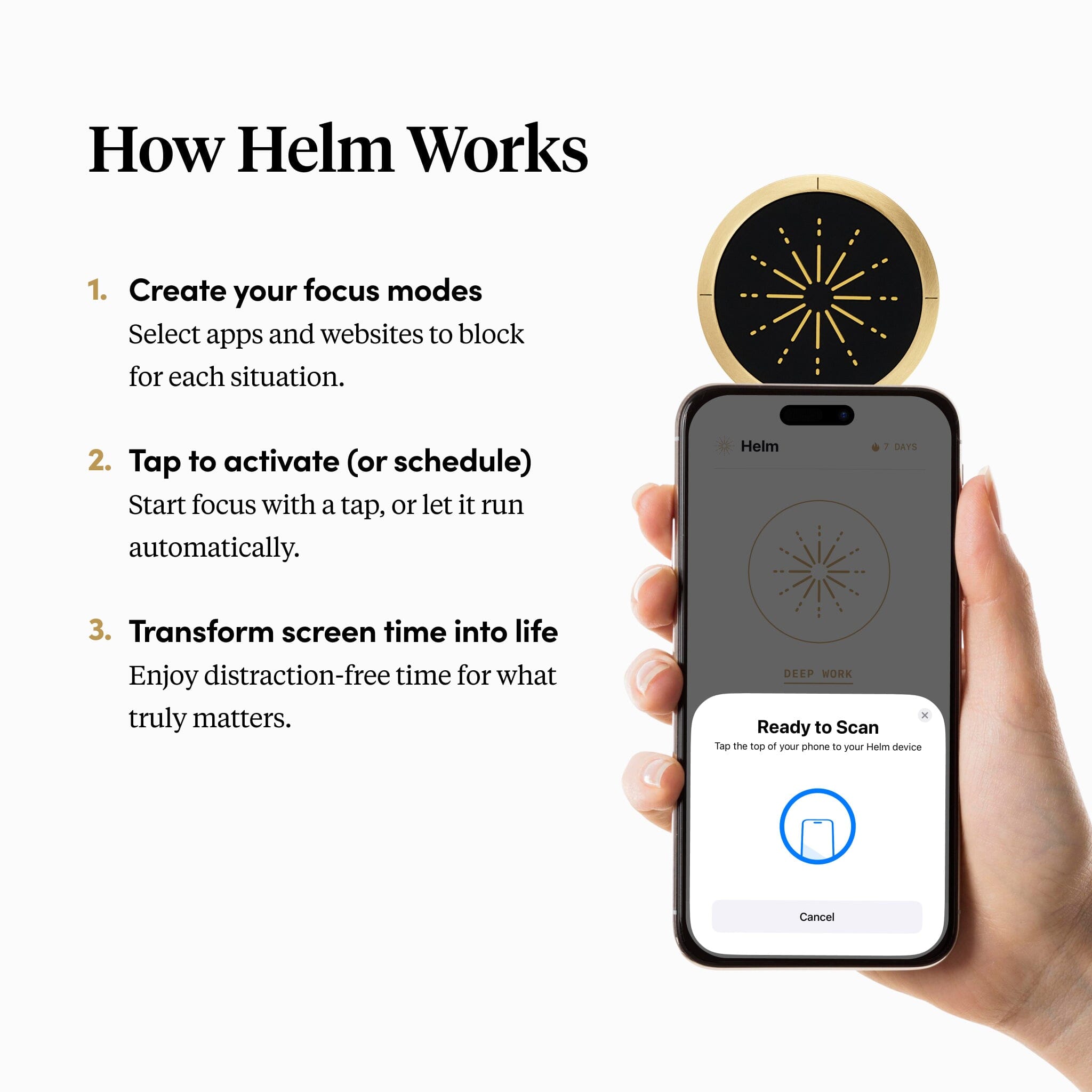Ever feel like there aren't enough hours in the day? You're not alone. Whether you're a freelance writer churning out articles or a team leader juggling multiple projects, mastering the art of time management can skyrocket your efficiency and financial success.
Let's dive into two powerful approaches to work - the manager's schedule and the maker's schedule - and uncover practical tips to squeeze the most value out of every minute.
Your Time is Your Most Valuable Asset
Think of your time as a precious resource, like money in the bank. It's not about cramming your schedule until it bursts; it's about ensuring every moment counts. To kick your efficiency into high gear, start treating your time like the valuable asset it is.
Ready to make every hour count? Here are 3 steps to get you started:
- Identify Your High-Value Tasks: Grab a piece of paper and jot down everything you do in a typical week. Next to each task, note its impact on your goals. If you're a freelance writer, "writing articles" should be at the top of your list, while "checking emails" might fall lower.
- Schedule Your High-Value Tasks First: Now that you know what really moves the needle, block out time for these tasks first. If writing takes you two hours, schedule that prime real estate in your calendar before anything else sneaks in.
- Review and Adjust Weekly: At the end of each week, take a hard look at what you actually accomplished. Did you spend your time as planned? Make tweaks for the upcoming week to keep maximizing your time investment.
The Manager's Schedule: Mastering the Art of Time Blocks
Managers thrive on structure, dividing their day into neat little packages of productivity. If this sounds like you, here's how to optimize your strategy:
- Chunk Your Time: Instead of a vague "work on project" scribbled in your planner, get specific. "Work on project from 9 AM to 10 AM" gives you a clear target and helps you focus like a laser.
- Prioritize Meetings: As a manager, meetings are your bread and butter. Schedule them at specific times and keep them short and sweet. Aim for 30-minute pow-wows and stick to the agenda like glue.
- Use Buffer Time: Give yourself a breather between meetings. Even a 10-minute break can help you regroup and gear up for the next task.
What Makes a Manager Tick?
Managers often have a defined start and finish to their day, squeezing value out of every moment. Here are the hallmarks of an effective manager:
- Organized: Their calendar looks like a perfectly solved Rubik's cube, with every slot filled purposefully.
- Decisive: They don't hemm and haw. They gather data, make a call, and keep the ball rolling.
- Communicative: They thrive on interaction, often engaging in discussions that drive their projects forward.
The Maker's Schedule: Crafting Uninterrupted Focus
On the flip side, makers need large chunks of uninterrupted time to get in the zone and create magic. Here's how to embrace this approach:
- Block Large Chunks of Time: Instead of peppering your day with meetings, carve out long stretches for creation. Dedicate a full morning to writing or designing without a single ping or pop-up to break your flow.
- Limit Distractions: Create a fortress of solitude where interruptions fear to tread. Silence those notifications and find a quiet nook where you can dive deep into your work.
- Embrace Flexibility: Unlike managers, makers thrive on open-ended projects. Give yourself permission to follow your creative spark without watching the clock tick away.
The Zeigarnik Effect: Taming the Task Monster
Ever notice how unfinished tasks nag at you, stealing your focus from what's in front of you? That's the Zeigarnik Effect in action. Here's how to keep it in check:
- Set Clear Goals: Before you dive into a task, define what "done" looks like. Writing a report? Decide you'll nail the introduction and first section before coming up for air.
- Use Timers: Try the Pomodoro Technique - work like a demon for 25 minutes, then take a 5-minute breather. It's like interval training for your brain.
- Review Open Tasks Regularly: Set aside time each week to take stock of what's still on your plate. It'll clear your mind and help you prioritize what needs your attention next.
Boosting Your Productivity: A Tailor-Made Approach
Now that you've got the lowdown on manager and maker schedules, it's time to put that knowledge to work. Here's a simple strategy to supercharge your efficiency:
- Assess Your Role: Are you primarily a manager or a maker? Or do you wear both hats? Knowing this will help you shape your ideal schedule.
- Craft a Hybrid Schedule: If you're juggling both roles, create a schedule that gives you the best of both worlds. Dedicate mornings to deep work and afternoons to meetings and management tasks.
- Reflect and Iterate: At the end of each week, take a moment to reflect on what worked and what didn't. Tweak your schedule to better fit your productivity patterns.
The Power of Maker Time
Understanding the importance of maker time is crucial for anyone looking to boost their efficiency. Maker time is that golden span where creativity flows and concentration peaks. Guard it like a dragon guards its treasure.
To harness the power of maker time, try these steps:
- Identify Your Productivity Sweet Spot: When do you feel most energized and focused? If your creativity peaks in the morning, schedule your maker tasks during those golden hours.
- Communicate Your Needs: Let your team know about your maker time. If you're going off the grid for a few hours of focused work, make sure everyone's in the loop.
- Create a Ritual: Establish a routine that signals the start of your maker time. It could be as simple as brewing a cup of coffee or setting up your workspace. This mental cue helps transition your mind into a focused state.
When Managers and Makers Collide
The dance between managers and makers can be tricky. While managers thrive on quick check-ins and meetings, makers need long stretches of uninterrupted time to work their magic.
To navigate these interactions smoothly, try these approaches:
- Set Clear Boundaries: Define when you're available for meetings and when you're in maker mode. If mornings are your creative peak, let colleagues know you're off-limits until lunch.
- Educate Your Team: Share insights about the maker schedule with your managers and colleagues. Help them understand how interruptions can derail your workflow and ultimately reduce overall productivity.
- Propose Alternative Meeting Times: If a meeting is necessary, suggest times that work better for your maker schedule. Afternoon slots might be perfect after you've completed your focused work.
The True Cost of Meetings for Makers
For managers, a quick meeting might seem like a blip on the radar. But for makers, it can derail an entire afternoon of productive work. Here's how to minimize the impact of meetings on your creative flow:
- Keep Meetings Short: Champion the cause of shorter, more focused meetings. Suggest a 30-minute cap to keep discussions on track and minds engaged.
- Have a Clear Agenda: Ensure every meeting has a defined purpose and agenda. This keeps everyone focused and prevents unnecessary tangents.
- Limit Attendees: Only invite the essential players. This reduces the time commitment for everyone involved and keeps the discussion relevant and productive.
Guarding Against Disruptions
Interruptions are kryptonite to efficiency, especially for makers. Once your concentration is broken, it can take ages to get back in the groove. Here's how to build a fortress around your focus:
- Use Do Not Disturb Signals: Whether it's a physical sign on your door or a digital status on your messaging platform, make it crystal clear when you're in deep work mode.
- Turn Off Notifications: Silence your phone and disable non-essential notifications on your computer. Create a distraction-free zone where you can concentrate fully.
- Set Specific Work Goals: Before you start your maker time, outline what you aim to accomplish. If you're writing, set a goal of completing a specific section or hitting a certain word count.
Be Ruthless with Your Time
Being strict with your time isn't about being mean; it's about being smart and purposeful with how you use each precious moment. Here's how to cultivate a ruthless approach:
- Evaluate Your Commitments: Regularly assess your current commitments and obligations. Are there meetings or tasks that don't serve your goals? It's time to cut them loose.
- Practice Saying No: Learn to decline invitations or tasks that interfere with your maker time. Be direct but polite. Try this: "I appreciate the invite, but I have a prior commitment that requires my focus."
- Focus on Value-Driven Activities: Prioritize tasks that align with your long-term goals. If a task doesn't contribute to your objectives, consider delegating or eliminating it.
Finding Balance: Maker and Manager Days
Striking a balance between maker and manager time is crucial for long-term effectiveness. Depending on your role, you may need to adjust your schedule to accommodate both approaches.
For a well-rounded schedule, stick to these guidelines:
- Assess Your Role: Determine how much time you need for maker activities versus managerial tasks. This will vary based on your job responsibilities.
- Designate Specific Days: Allocate certain days for deep work and others for meetings and management tasks. For example, you might choose to reserve Mondays and Wednesdays for maker work.
- Reflect and Adjust: At the end of each week, reflect on your productivity. Did you achieve your goals? If not, adjust your schedule accordingly for the following week.
Creating a Productive Environment
Fostering a productive space is crucial for both makers and managers. It's about organizing your workspace, planning your time, and managing interactions. A conducive atmosphere can significantly boost concentration and productivity.
Here's how to create your productivity oasis:
- Design Your Workspace: Your workspace should inspire productivity. Declutter your desk, add some greenery for a touch of nature, and ensure good lighting. Create a dedicated area for deep work, free from distractions.
- Establish Clear Boundaries: Communicate your work hours to your team. If you need uninterrupted time, let them know when you're unavailable. This sets expectations and fosters respect for your time.
- Use Technology Wisely: Leverage tools that enhance productivity. Use project management software like Trello or Asana to keep track of tasks and deadlines. These tools can help you visualize your workload and prioritize effectively.
Empowering Your Team: A Manager's Guide
As a manager, you play a crucial role in creating a productive work atmosphere. Here's how to boost your team's productivity:
- Hold Regular Check-Ins: Schedule weekly one-on-ones to discuss progress and challenges. This keeps communication open and provides a platform for feedback. Make it a habit to ask how you can support your team better.
- Encourage Time Blocking: Teach your team the art of time blocking. Encourage them to set aside specific times for focused work and meetings. Suggest they reserve mornings for deep work and afternoons for collaborative tasks.
- Recognize Achievements: Acknowledge and celebrate milestones, both big and small. This boosts morale and motivates your team to keep pushing forward. A simple "great job" can go a long way in fueling productivity.
Optimizing Your Time: A Maker's Toolkit
As a maker, taking steps to safeguard your time and boost efficiency is crucial. Here are some actionable tips you can implement today:
- Identify Your Peak Hours: Pay attention to when you feel most creative and focused. If you're a morning person, schedule your most challenging tasks for that time.
- Set Up a Routine: Create a daily routine that includes dedicated maker time. Consistency helps reinforce your productive habits. For example, start each day with a 30-minute writing session before diving into meetings.
- Limit Multitasking: Focus on one task at a time to enhance the quality of your work. If you're writing, avoid checking emails or social media until your session is complete.
Implementing Quiet Time in Organizations
Peaceful moments can greatly enhance efficiency, particularly for makers. Here's how to incorporate them into your organizational routine:
- Mandate Quiet Hours: Designate specific hours during which no meetings or interruptions occur. For example, set aside 10 AM to 12 PM each day as quiet time.
- Communicate the Purpose: Explain the importance of quiet time to your team. Help them understand that it's about fostering focus and improving output.
- Evaluate and Adjust: After implementing quiet time, gather feedback. Are team members finding it beneficial? Adjust the schedule based on what works best for everyone.
Trust and Communication in Remote Work
Remote work comes with its own set of productivity challenges. Establishing trust and fostering communication are crucial elements. Here's how to make it work:
- Set Clear Expectations: Clearly define roles, responsibilities, and deadlines. This ensures everyone understands their tasks and how they contribute to the team.
- Utilize Video Calls Wisely: Use video calls for important discussions but keep them concise. For quick updates, consider using chat platforms instead.
- Encourage Regular Updates: Create a culture where team members share progress regularly. For example, have a daily stand-up meeting to keep everyone informed and engaged.
Final Thoughts: Maximizing Your Time Investment
To optimize your time investment for maximum returns, it's crucial to adopt a strategic mindset. By understanding the interplay between makers and managers, you can cultivate an environment that promotes peak efficiency.
Remember these key points as you move forward:
- Be Proactive: Don't wait for productivity issues to arise. Regularly assess your team's workflow and make adjustments as necessary.
- Empower Your Team: Encourage team members to take ownership of their productivity. Provide them with the tools and resources they need to succeed.
- Maintain Flexibility: Understand that productivity isn't one-size-fits-all. Be open to trying new approaches and adapting to what works best for you and your team.
By implementing these strategies, you'll create a workspace that caters to the needs of both makers and managers, resulting in improved outcomes for your organization. Now, go forth and make every minute count!
































